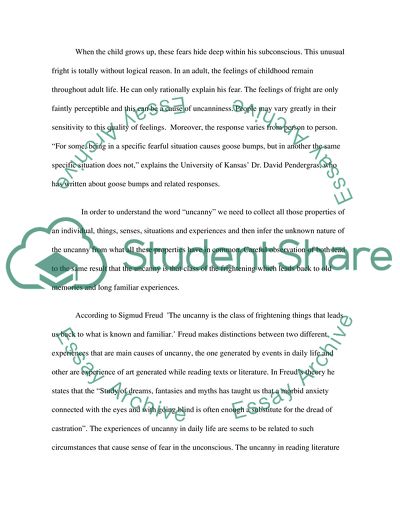Cite this document
(“Sigmund Freud: An Understanding of the Word Uncanny Essay”, n.d.)
Retrieved from https://studentshare.org/psychology/1565536-photography-2-year-essay-ba-course
Retrieved from https://studentshare.org/psychology/1565536-photography-2-year-essay-ba-course
(Sigmund Freud: An Understanding of the Word Uncanny Essay)
https://studentshare.org/psychology/1565536-photography-2-year-essay-ba-course.
https://studentshare.org/psychology/1565536-photography-2-year-essay-ba-course.
“Sigmund Freud: An Understanding of the Word Uncanny Essay”, n.d. https://studentshare.org/psychology/1565536-photography-2-year-essay-ba-course.


